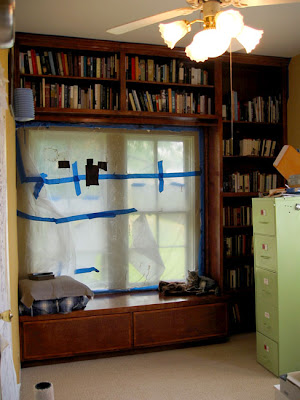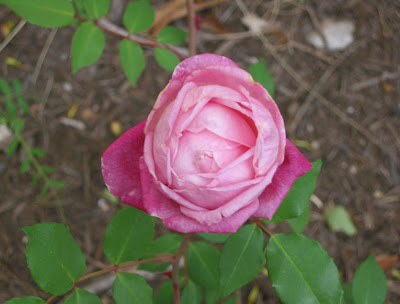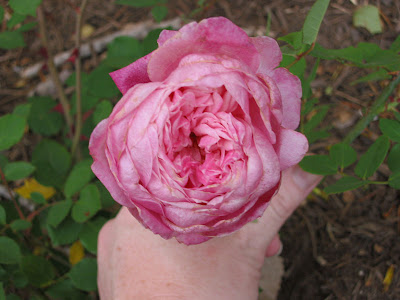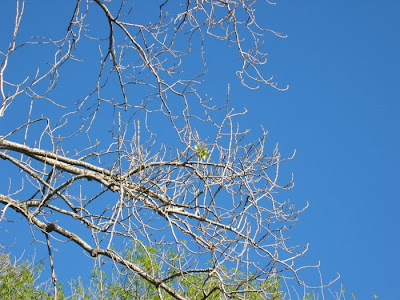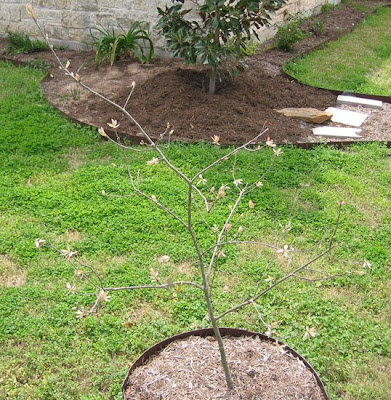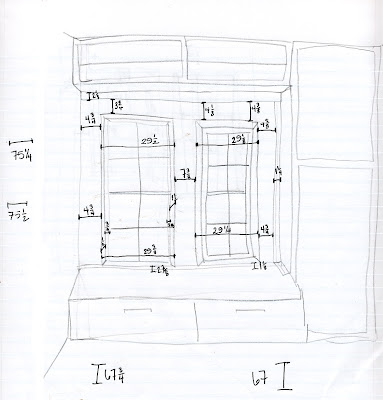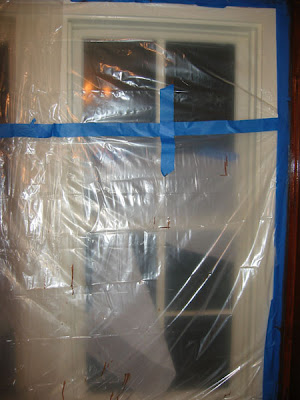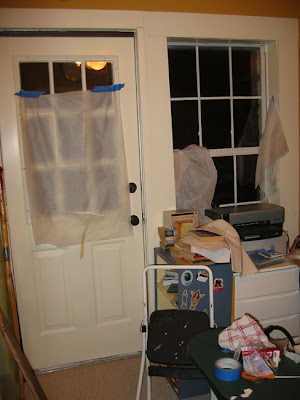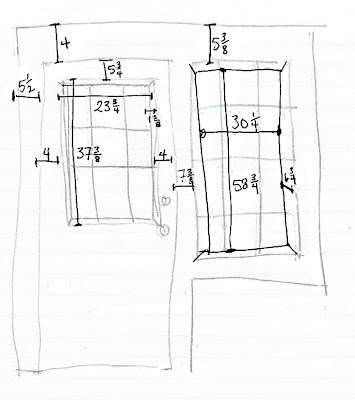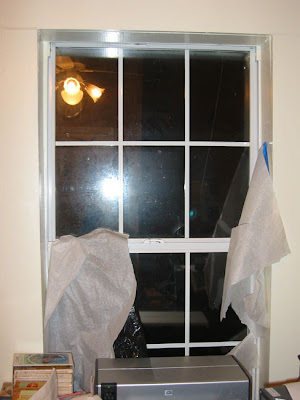We finished varnishing the shelves Friday night, and I spent much of Saturday finally, finally putting my books in order ("Oh here are the rest of my Elizabeth Enright books!" "Hey! I still can't find Vanity Fair. Or Valperga. Or the other 4 Austen novels." "Do I put the Homeric Hymns with Ancient Literature or with Religion & Mythology?" et cetera). The new shelves got novels from the Romantic and Victorian periods, and our biggest freestanding bookcase got Ancient, Augustan, Edwardian, and Other 20-21st Century. All in alphabetical order by author. The over-the-window shelves got biographies, memoirs, letters, and Queen Victoria, at present in no particular order. Everything else is organized into major categories, but all jumbled within each category.
Nevertheless, it's a huge improvement, and none of my shelves are stacked 2 layers of books deep, thank goodness. Po was very patient with all the thumping and crashing, and was even so well-behaved as to maneuver into a book fortress without knocking over a single book (how, I'm not sure--levitation, perhaps?)
And here's the almost-finished product (one shelf still needs 1 more coat of varnish at top left. And we need to install drawer pulls. And move all our files from the green file cabinet. And then banish the cabinet.)
The Garden
To my very pleased surprise, 3 cuttings of the mystery red rose are still with us. I plan to re-pot in about a month. With luck, we may be able to reintroduce it to the landscape this year!
And speaking of mysteries, here is another unknown rose, acquired a little over a year ago. It has very fat, round buds that open to extremely dense, cabbagey pink flowers. We had been calling it 'M. Tillier,' then 'Marie van Houtte,' but neither of those really fits. In any event, it's blooming enthusiastically by the back door. Pretty, no? The foliage and structure of the shrub are Tea-esque, but the blooms are more like a Bourbon or a Hybrid Perpetual. Beats us.
The Bad News--More Rose Fungus
That awful vascular disease has reappeared, this time on a modern rose, 'Wild Blue Yonder.' We don't have quite the same history with WBY as we do with, for example, 'Cramoisi Superieur,' But it's got a lovely purple bloom with a perky white eye, and I hate to see that fungus prevail again.
The stem I cut from WBY is below. You can see the characteristic behavior of the disease (sort of--sorry for the blurry picture). The fungus often starts elsewhere than the tip of the stem, and it causes fast-spreading areas of brown-black necrosis. Leave turn brown-black, too, though they don't always form the shepherd's crook shape characteristic of fireblight. I've researched rose diseases online, but nothing seems to exactly match our problem. Canker/dieback is a contender, but if so, this is a weapons-grade strain--that fungus is usually pretty slow moving. One of the 'Duchers' out by the light pole lost half its stems to the disease, so I'm not optimistic about its long-term prospects. So far, those are the only victims that have turned up. So I need to start (ick, ick) a schedule of preventive fungicide application for the next few months. Hopefully, we can eradicate the disease this year and leave off the chemicals next spring.
Happy Thoughts
And finally, the sequel to my leaf buds of Elgin series of some weeks ago. Our trees are starting to leaf out properly.
I was amused by this. Most of the cottonwood was still in the swollen bud stage, but the tiny cluster of leaves in the middle of the photo below had already popped out, several days ahead of everyone else. Now, of course, the whole tree is fully green.
Then, as I was pulling into the driveway the other day, I thought, "How nice! Our white oak is covered in... white flowers?" Of course, they were rosettes of new leaves, not flowers, but they make it clear how the tree (Quercus alba) got its name. And it's a really pretty effect either way.
Our Lacey oaks (Q. laceyi) are also putting on pretty rosettes of leaves, in this case, bright pink ones.
So we're feeling pretty springy and Easterish over here, even if we didn't paint a single egg.


